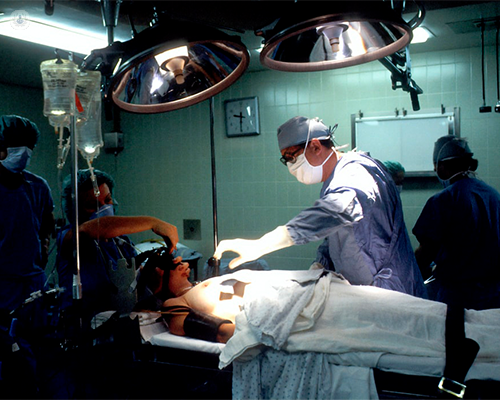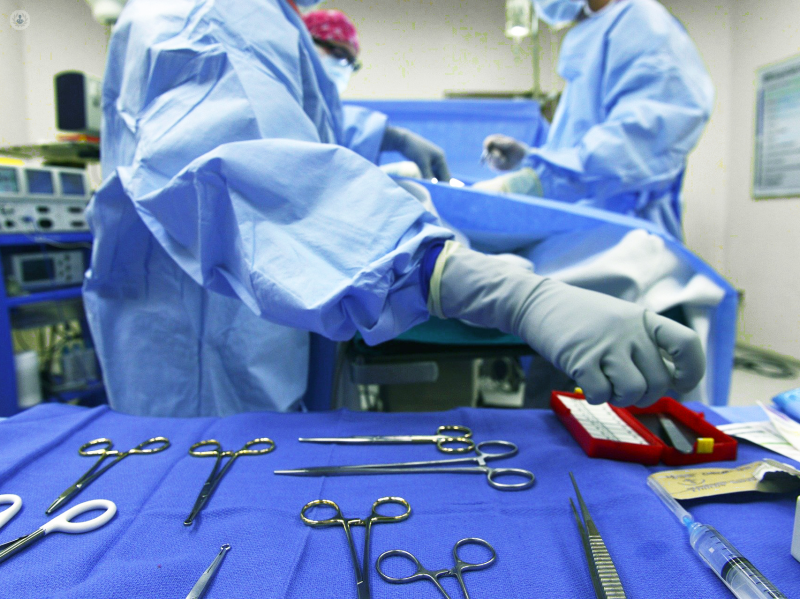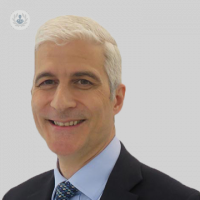Laparoscopy: an expert overview of the surgical procedure
Written by:Have you been suffering from abdominal pain and would like to treat it effectively? If you have, then a quick and safe keyhole laparoscopy surgical procedure could be the solution you have been seeking. Mr Paul Leeder is a highly regarded consultant general surgeon, who, in our latest article, explains how and why a diagnostic laparoscopy is performed.

What is laparoscopy?
Laparoscopy is a keyhole procedure designed to examine the abdominal cavity. It usually involves a full general anaesthetic, with the patient being asleep during the procedure.
When is a diagnostic laparoscopy recommended?
A diagnostic laparoscopy may be performed as an emergency to look for causes of acute abdominal pain. It can also be performed in a planned setting, to look for causes of symptoms such as pain, or to diagnose diseases and exclude serious problems such as cancer.
How is a diagnostic laparoscopy performed?
A small camera is placed into the abdomen and the space is filled with gas to allow the surgeon to view the internal organs. One or two other small holes may be made to place instruments.
The surgeon then has a careful look at all of the internal organs, which are displayed on a high-definition screen. Once completed, most of these holes are less than 1cm long and are usually closed with dissolving stitches or glue.
If the surgeon finds something during the diagnostic laparoscopy, can they treat it in the same procedure?
The surgeon will usually take some pictures or a video as a record of the laparoscopy. If they identify something that looks abnormal, they can take a small sample to look at under the microscope.
If the surgeon encounters scar tissue (adhesions), they may divide this in order to improve the view. Dividing adhesions can relieve symptoms if they are causing problems. If some organs appear abnormal, these can be removed or repaired during the laparoscopy.
If an abnormality is identified, this can occasionally require a larger hole to be made to perform this part of the procedure safely, or to retrieve any removed tissue. These possibilities will usually be discussed with the patient at length prior to the laparoscopy.
What does recovery from a laparoscopy involve?
As the wounds are small and closed with glue, there is usually no special maintenance that is required after surgery. The glue is waterproof which means that the patient can shower the day after the procedure. The glue usually peels off after about a week.
It is usual to feel some discomfort after any operative procedure. We advise taking simple pain killers, such as paracetamol, regularly for the first 24 hours. Very little pain relief is usually required after that time.
Most people can return to their normal activities after a few days, including driving. If more severe pain is experienced, we would advise the patient to contact their surgical team to check that everything is normal.

What are the next steps following a laparoscopy?
Most laparoscopy is usually performed as a day case, or at most, an overnight stay. The advantage of laparoscopy is that recovery is a lot quicker than a traditional open operation. Laparoscopy allows for a superior view of all the abdominal organs and reduces the risk of problems such as scar tissue or hernias after the procedure.
The surgeon will usually see the patient in a clinic a few weeks later to check on the recovery. They will discuss all of the findings with the patient, including the results of any samples that were taken during the procedure. They will then discuss the next steps or options in the patient’s treatment. There will always be ample time to ask any questions along the way.
Mr Paul Leeder is a highly renowned consultant general surgeon, specialising in medical conditions such as obesity, acid reflux, as well as gastric cancer surgery amongst others. If you are considering undergoing a diagnostic laparoscopy or would like further information about how Mr Leeder can help you, check out his Top Doctor’s profile and book an appointment with him.


